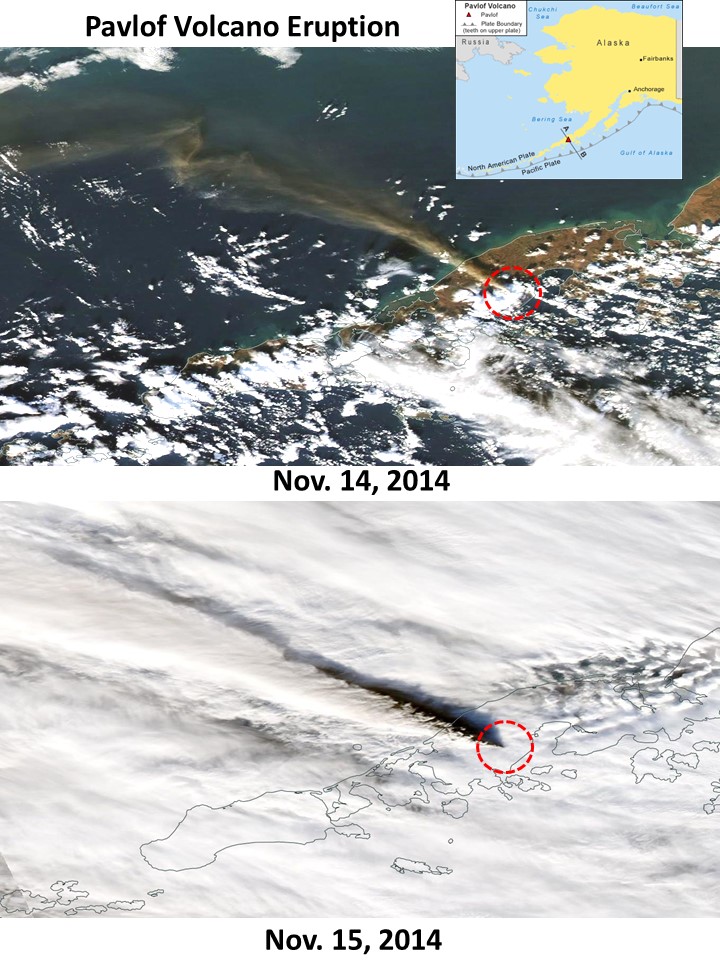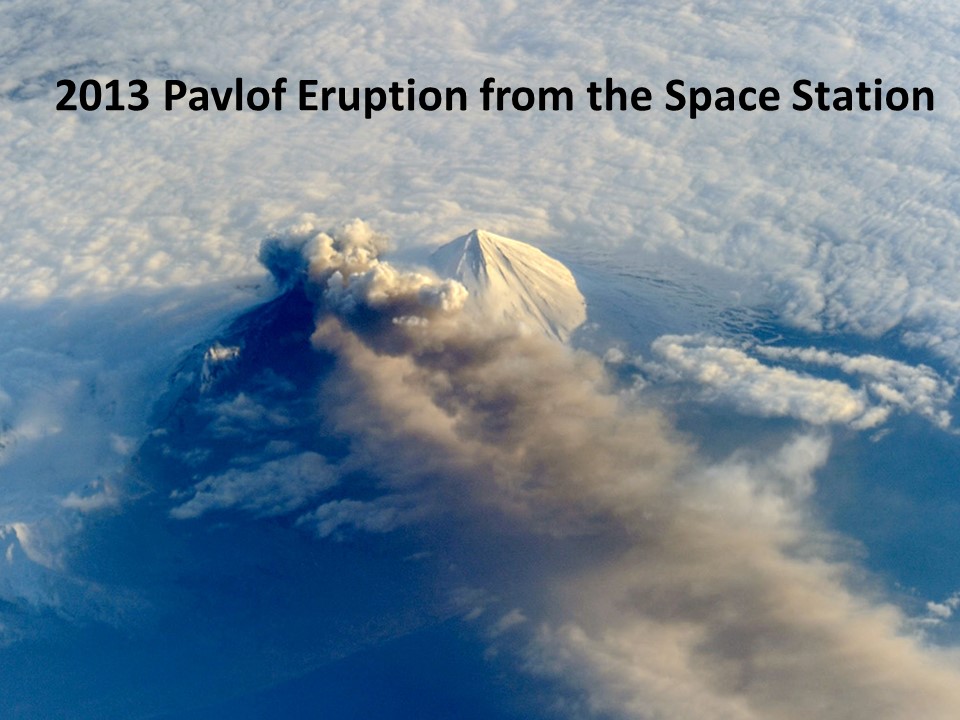One of the most active volcanoes in the U.S., Pavlof, has been erupting in a remote section of Alaska’s Aleutian Islands over the last couple of days. MODIS satellite imagery shows the ash plume, estimated to be 35,000 ft in altitude, blowing northwest from Mt. Pavlof out over the Bering Sea.
In the second image above (from yesterday), the high-altitude ash cloud casts a shadow on the low clouds below it.
Here’s what last year’s eruption of Pavlof looked like as viewed from the International Space Station.
Pavlof is a stratovolcano, the type which can produce explosive eruptions, which in rare instances leads to temporary global cooling if enough sulfur is ejected into the stratosphere. It is not known how long Pavlof will continue to erupt, but it has been quiet for the last several hours.
Details and near-realtime monitoring can be found at the Pavlof page of the Alaska Volcano Observatory.

 Home/Blog
Home/Blog





